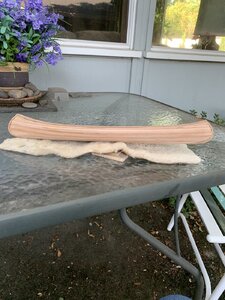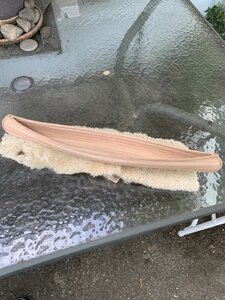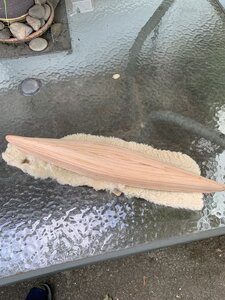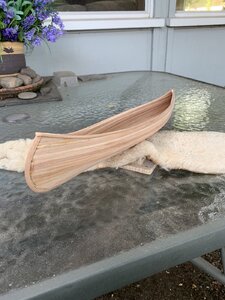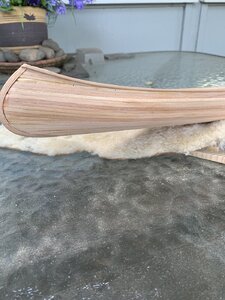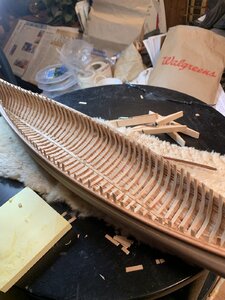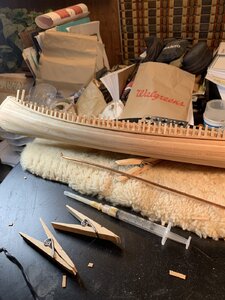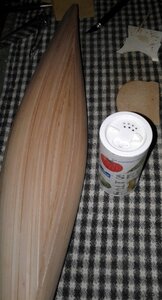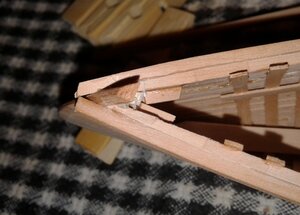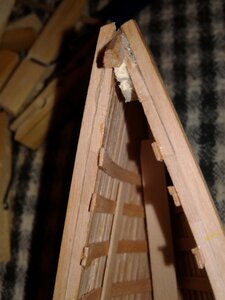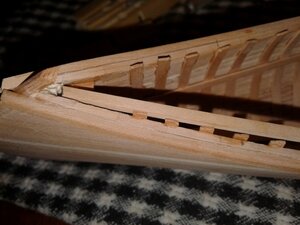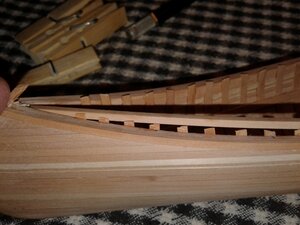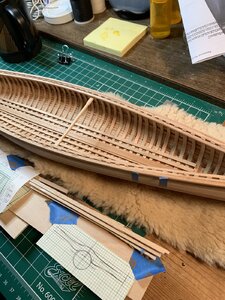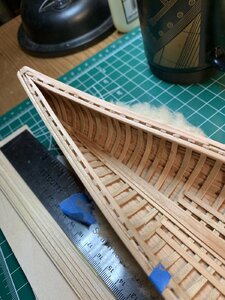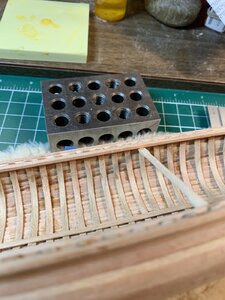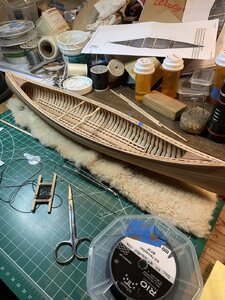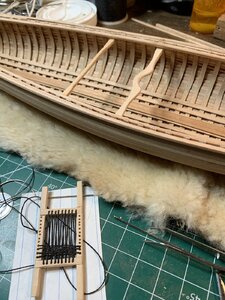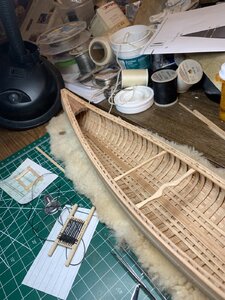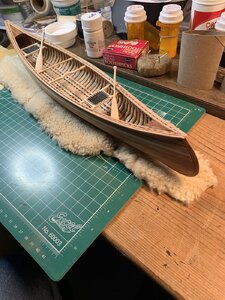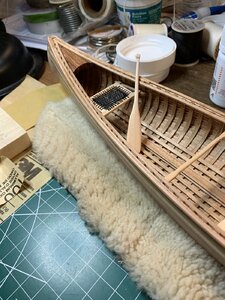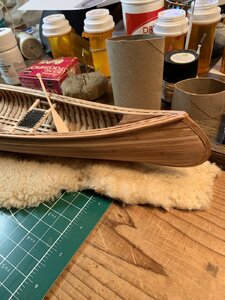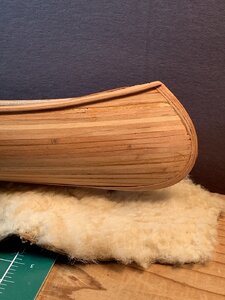I cut a strip to length by doing a couple of dry-fittings. Then apply glue to every rib along the sheer. To place the inner gunwale, I clamp the strip at one end and work my way to the other. It is usually a bit tricky because of the curves from the top of the stem down towards the mid section and then back up to the top of the stern.
It is difficult to explain except that I proceed very carefully.
You can also apply glue to a few ribs, clamp the strip all the way to the other side, like if you were to dry-fit it the rest of the way, then wait for the glue to dry. Then remove all the clamps through the length that did not receive glue, then apply glue to the next few ribs and repeat the process.
There is also a third method if you are afraid the strip will move down from the top of the stem and stern as it is being clamped to follow the curve of the sheer.
Since I am at this stage on the canoe I am working on, I figure I would use this method to place my inner gunwale.
Here it goes:
1) glue small blocks at the top of the stem and stern to unable the strip to move down when it is placed to follow the curve. The block should be installed so that the inner wale is sitting either leveled with the sheer or slightly higher as you will have to sand the inner gunwale down to line up with the outwale as well as remove any glue from the ribs onto the sheer.
The blocks:
View attachment 175871
or you can use the part of the stem piece from the mold use to lay the planking:
You can create a small ledge in it for the end of the inner gunwale to rest on: like this:
View attachment 175872
2) cut the inner gunwales to length: I would suggest to work on 1 side at a time. Once cut do a final dry-fit...install
3) install the inner gunwale starting at one resting on either the blocks or the ledge into the stem piece.
View attachment 175873
From there you can apply glue at the top portion of the ribs (area in contact with the inner wale) clamp the strip down as you line it up (leveling it) with the sheer.
Here is a view of the strip place at the top of the stem / stern. All you have to do is push it down to line it up with the sheer. Because it rest on the blocks or the ledge, it will not move down and you can just go along the sheer clamping away to the other end.
View attachment 175874
4) clamped and waiting for the glue to dry ... then, the other side....
View attachment 175875
Hope this helps.
G
